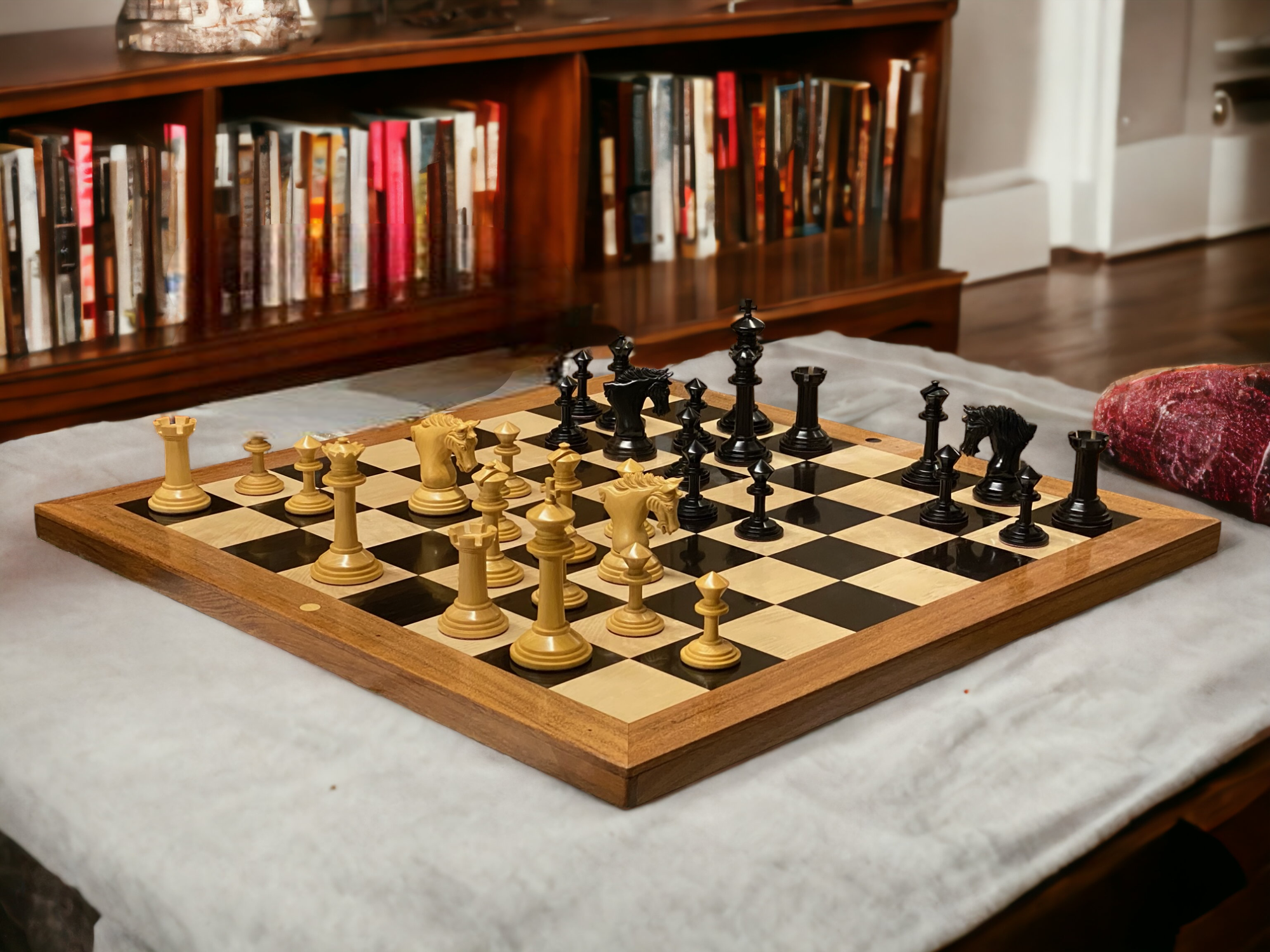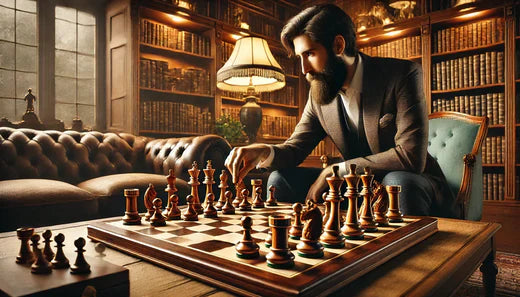A Deep Dive into the Modern Market for Chess Sets, Boards, and Boxes
In a world increasingly dominated by screens, algorithms, and fast-paced digital entertainment, the ancient game of chess has not only held its ground—it has experienced a renaissance. Retailers around the globe, especially here in the UK, are witnessing a renewed interest in the physical beauty and enduring charm of chess sets, boards, and boxes. For those involved in the world of chess retail—like us at The English Chess Company—this revival is more than a trend. It’s a testament to the timeless appeal of craftsmanship, tradition, and intellectual pursuit.
In this detailed exploration, we look at the current state of the chess market, analyse the preferences of modern buyers, discuss the intricacies of crafting and curating quality chess products, and share insights into what lies ahead for retailers and collectors alike.
1. The Chess Boom: A Pandemic-Era Resurgence with Lasting Effects
The COVID-19 pandemic turned millions toward indoor hobbies and mind-stimulating activities—and chess rose like a phoenix. Fuelled by Netflix’s The Queen’s Gambit, increased online streaming of tournaments, and a new wave of influencers promoting the game, chess saw a meteoric rise in popularity from late 2020 onwards.
Sales of physical chess products surged during this time. Many retailers, including ourselves, struggled to meet demand for quality sets, especially those that were hand-carved or historically inspired. This surge wasn’t just about entertainment; it marked a renewed appreciation for tactility, craftsmanship, and analogue tradition.
Even in the post-pandemic era, that momentum hasn’t slowed. Chess is no longer seen solely as a game for schools or clubs—it’s a statement piece, a design element, and a meaningful gift.
2. What Today’s Customers Want: Quality, Heritage, and Style
At The English Chess Company, we’ve observed a clear shift in buyer priorities over the past decade. While price is still a factor for entry-level players, mid-range and high-end buyers are looking for:
-
Authenticity – Sets modelled on historic Staunton designs, Jaques replicas, or traditional European craftsmanship.
-
Aesthetic appeal – Rich wood grains, clean inlays, and beautifully lacquered finishes.
-
Functionality – Storage options like integrated drawers or companion boxes.
-
Longevity – Quality felted bases, weighted pieces, and durable boards.
-
Sustainability – Ethically sourced woods and eco-conscious packaging.
The growing trend is toward sets that are not only playable but also display-worthy—a crossover between games and interior décor.
3. Chess Sets: The Hero Product of the Market
The chess set remains the cornerstone of the industry. Let’s break down the key trends and customer segments:
Entry-Level Sets
Perfect for casual players and beginners, these sets typically feature:
-
Vinyl roll-up boards with plastic pieces.
-
Lightweight wooden pieces on compact veneer boards.
-
Popular in schools, chess clubs, and among first-time buyers.
Retail Tip: Value packs and educational bundles perform well here—especially those including rulebooks, timers, and drawstring bags.
Mid-Range Sets
A rapidly growing segment, ideal for enthusiasts and gift-givers.
-
Classic Staunton-style wooden pieces made from boxwood or acacia.
-
Boards in walnut, maple, or mahogany, usually inlay veneered or laminated.
-
Sets often come with slide-lid boxes or magnetic closures.
Retail Tip: Highlight craftsmanship and detail—this audience appreciates design, tradition, and quality.
Luxury Sets
Reserved for collectors and serious players who want something extraordinary.
-
Hand-carved knights, double or triple-weighted pieces.
-
Exotic woods like ebony, padauk, or rosewood.
-
Chessboards often feature solid wood or Italian marquetry.
-
Sets may include certificates of authenticity and bespoke presentation cases.
Retail Tip: Offer detailed provenance and clear photography. Videos showing the pieces being handled help convey their real-world beauty and scale.
4. Chessboards: A Marketplace Essential with Design Flair
While sets often come with boards, many buyers prefer to mix and match. The chessboard has evolved into a standalone product of considerable importance.
Key Characteristics Buyers Look For:
-
Square Size – Proportional to king base size. Common sizes: 1.5" to 2.25".
-
Wood Grain and Inlay – Walnut, maple, mahogany, and wenge remain top choices.
-
Finish – Satin matte for minimal glare; high gloss for luxury pieces.
-
Border Width and Notation – Some prefer coordinate labels (a-h, 1-8), others favour clean borders.
Retail Tip: Offer pairing guides. Customers appreciate recommendations for board and piece size compatibility.
5. The Rise of Chess Boxes and Storage Solutions
Chess boxes have become an essential accessory—especially as more buyers seek elegant, safe storage for their heirloom-quality pieces.
Popular options include:
-
Slide-lid mahogany boxes – Simple, effective, and traditional.
-
Hinged felt-lined boxes – Offer greater protection and style.
-
Compartmentalised luxury cases – Ideal for high-value sets; often custom made.
Retail Tip: Include interior dimensions and fit guides. Nothing frustrates customers more than a stunning box that’s too large or too tight for their pieces.
6. Craftsmanship Matters: Handmade vs. Mass-Produced
The difference between a mass-produced set and a handcrafted one is night and day.
-
Hand-carved pieces offer personality, nuance, and individuality. No two knights are exactly the same.
-
Turned and polished finishes add a tactile richness that cannot be replicated by plastic moulds.
-
Weighted balance contributes to gameplay satisfaction, particularly during competitive matches.
As a specialist retailer, we find that customers are increasingly asking, “Who made this?” and “Where was it made?” They want to feel connected to the origin story of their product.
Retail Tip: Tell the story of the artisans. Transparency builds trust and fosters brand loyalty.
7. Heritage Reproductions: The Prestige of Jaques and Staunton
Collectors and connoisseurs are particularly drawn to faithful reproductions of 19th-century chess sets—particularly those from the Jaques of London archive.
Reproductions based on the original 1849 Staunton pattern remain a holy grail. These pieces are revered for their historic proportions, broad bases, elegant knights, and enduring symbolism.
At The English Chess Company, we have long specialised in recreating these legendary designs. Our customers value:
-
Historical accuracy.
-
Quality hardwoods (ebony, boxwood, rosewood).
-
Proper weighting and green felt bases.
-
Certification and heritage packaging.
Retail Tip: Consider limited edition runs or numbered sets to enhance collectability and exclusivity.
8. Customisation: A Rising Demand in a Personalised Market
From monogrammed boxes to bespoke board dimensions and colour finishes, modern buyers—especially for gifts—want the ability to personalise.
Customisation options can include:
-
Nameplates and engraving.
-
Colour staining (ebonised, antique, natural).
-
Custom board sizing to match specific room layouts.
-
Additional queens or engraved initials on kings.
Retail Tip: Offer lead-time transparency and detailed previews. Use high-quality mock-ups to reduce uncertainty.
9. Chess as a Gift: From Corporate Gifting to Milestone Moments
Chess is increasingly being purchased as a premium gift—for retirement, weddings, anniversaries, or corporate achievements.
What makes it ideal?
-
Timelessness and universal appeal.
-
Cross-generational value.
-
Strong aesthetic presence.
Retail Tip: Position gift-ready sets with luxury packaging, complimentary cards, and shipping protection. Include wording like “perfect for gifting” or “ideal heirloom keepsake.”
10. Global Market Insights and UK-Specific Trends
The UK chess retail scene is vibrant but distinct from its global counterparts. While the USA and India dominate in terms of mass production and tournament play, UK buyers tend to value heritage, authenticity, and understated luxury.
Notable UK preferences:
-
Handmade pieces over factory sets.
-
Classic woods (walnut, boxwood, rosewood).
-
Understated packaging with premium protection.
-
EU and UK production over Asian imports (especially for high-end items).
Retail Tip: Highlight UK and EU production where applicable—especially post-Brexit, when provenance has become a differentiator.
11. The Digital Touch: Ecommerce Trends and Customer Expectations
Online shoppers now expect:
-
Fast-loading product pages.
-
Mobile responsiveness.
-
360° images and close-ups.
-
Clear return policies.
-
Fast, secure checkout with flexible delivery options.
At The English Chess Company, we’ve continually refined our digital storefront to meet these expectations—offering not only product excellence but a premium user experience.
Retail Tip: SEO-driven blogs, detailed FAQs, and high-quality photography are more important than ever.
12. Looking Ahead: Sustainability, Technology, and Timelessness
As we look toward the next 5–10 years, several trends are worth noting:
-
Sustainable woods and low-impact production methods will define the future of premium chess manufacturing.
-
Augmented Reality (AR) will allow customers to view boards and sets in their own living rooms before purchase.
-
Subscription models and club memberships may emerge for collectors and enthusiasts.
-
Board game cafés and public venues will continue to spur interest in quality sets, driving both casual and serious sales.
Conclusion: Chess is More Than a Game—It’s a Legacy
At The English Chess Company, we believe that every chess set sold is more than just a transaction—it’s the start of a journey. Whether it’s a child learning their first move, a retiree rekindling an old passion, or a collector acquiring a long-sought treasure, chess connects us all across time and culture.
As retailers, artisans, and lovers of the game, we remain committed to offering the finest chess sets, boards, and boxes available in the UK and beyond. With quality, authenticity, and care, we hope to continue serving a world that has, once again, fallen in love with chess.



